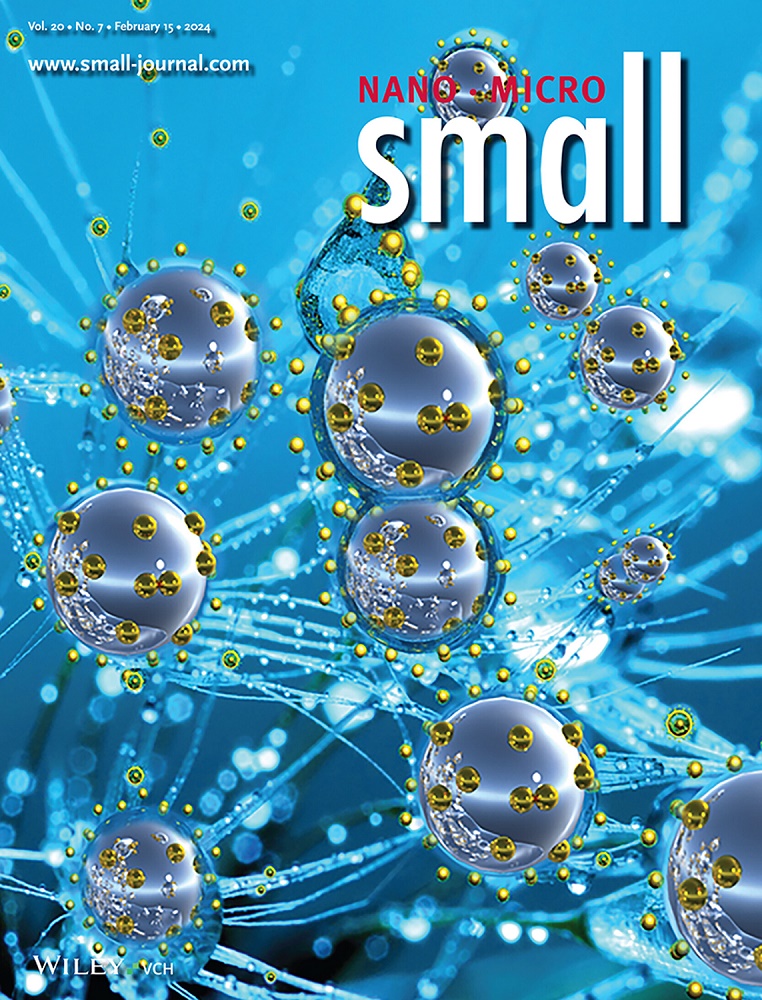Advanced Textile-Based Lithium-Metal Batteries: Interfacial Engineering, Structural Design, and Wearable Applications.
IF 12.1
2区 材料科学
Q1 CHEMISTRY, MULTIDISCIPLINARY
引用次数: 0
Abstract
Textile-based lithium-metal batteries (TLMBs), pivotal for next-generation wearable energy storage, offer unparalleled advantages including ultrahigh theoretical capacity (3860 mAh g⁻¹), low electrochemical potential (-3.04 V vs standard hydrogen electrode), and seamless integration with flexible electronics. However, critical challenges such as dendritic lithium growth, unstable solid-electrolyte interphase (SEI) evolution, and mechanical degradation under dynamic deformation hinder their practical deployment. This review presents a transformative paradigm centered on hierarchical structural engineering-encompassing atomic-to-macroscale interfacial design and textile-architecture optimization-to address these barriers. The roles of gradient-pore distributions, Janus-structured fibers, and kirigami-inspired geometries are systematically dissected in homogenizing Li-ion flux, stabilizing SEI layers, and decoupling mechanical stress from electrochemical pathways, enabling TLMBs to sustain >500% strain without capacity loss. Furthermore, system-level integration strategies for self-powered health-monitoring textiles and thermally adaptive batteries are scrutinized, bridging fundamental insights with scalable manufacturing. By identifying underexplored frontiers such as dynamic SEI regulators and circular economy-aligned designs, this work provides a strategic roadmap to advance TLMBs toward high-energy, mechanically robust wearable systems. The analysis aims to inspire interdisciplinary innovation, accelerating the transition from lab-scale breakthroughs to real-world applications in flexible energy storage.先进的纺织基锂金属电池:界面工程、结构设计和可穿戴应用。
基于纺织品的锂金属电池(tlmb)是下一代可穿戴能源存储的关键,具有无与伦比的优势,包括超高的理论容量(3860 mAh g⁻¹),低电化学电位(与标准氢电极相比-3.04 V),以及与柔性电子设备的无缝集成。然而,枝晶锂的生长、不稳定的固体电解质间相(SEI)演化和动态变形下的机械降解等关键挑战阻碍了它们的实际应用。这篇综述提出了一种以分层结构工程为中心的变革范式,包括原子到宏观尺度的界面设计和纺织结构优化,以解决这些障碍。梯度孔分布、jans结构纤维和kirigami启发的几何形状在均匀锂离子通量、稳定SEI层和从电化学途径解耦机械应力方面的作用被系统地剖析,使tlmb能够承受bbb500%的应变而不损失容量。此外,对自供电健康监测纺织品和热适应性电池的系统级集成策略进行了仔细研究,将基本见解与可扩展制造联系起来。通过确定未开发的前沿领域,如动态SEI调节器和与循环经济相一致的设计,这项工作提供了一个战略路线图,将tlmb推进到高能量、机械坚固的可穿戴系统。该分析旨在激发跨学科创新,加速从实验室规模的突破到灵活储能的实际应用的转变。
本文章由计算机程序翻译,如有差异,请以英文原文为准。
求助全文
约1分钟内获得全文
求助全文
来源期刊

Small
工程技术-材料科学:综合
CiteScore
17.70
自引率
3.80%
发文量
1830
审稿时长
2.1 months
期刊介绍:
Small serves as an exceptional platform for both experimental and theoretical studies in fundamental and applied interdisciplinary research at the nano- and microscale. The journal offers a compelling mix of peer-reviewed Research Articles, Reviews, Perspectives, and Comments.
With a remarkable 2022 Journal Impact Factor of 13.3 (Journal Citation Reports from Clarivate Analytics, 2023), Small remains among the top multidisciplinary journals, covering a wide range of topics at the interface of materials science, chemistry, physics, engineering, medicine, and biology.
Small's readership includes biochemists, biologists, biomedical scientists, chemists, engineers, information technologists, materials scientists, physicists, and theoreticians alike.
 求助内容:
求助内容: 应助结果提醒方式:
应助结果提醒方式:


